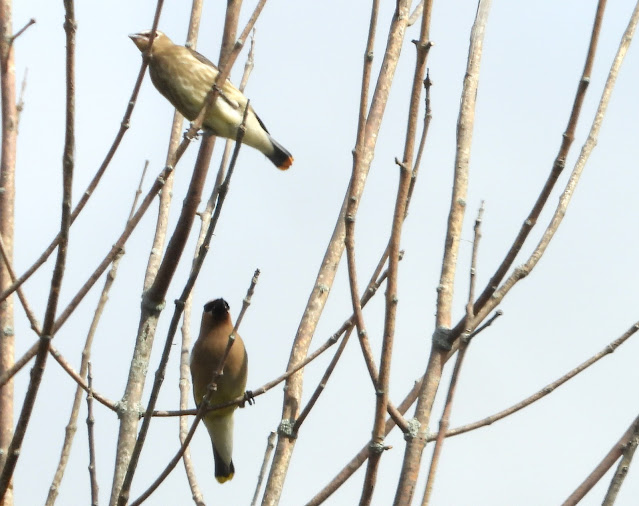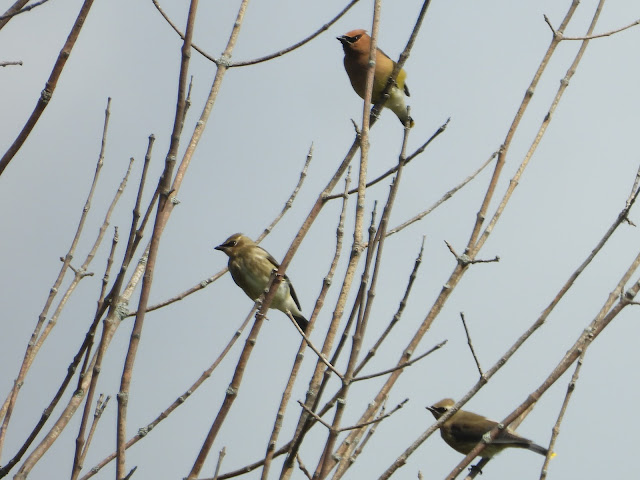U.S.-Canada-Costa Rica-Panama-Australia-New Zealand-Fiji-S Africa-Zambia-Zimbabwe-Botswana-Trinidad & Tobago-Mexico-Bahamas-Jamaica-Cayman Islands-Portugal-Italy-Greece-Turkey-Dominican Republic-Columbia-Guatemala-St Kitts-Guadaloupe-Barbados-Grenada-Aruba-Bonaire-Iceland-United Kingdom-Netherlands-US Virgin Islands
Translate
Monday, September 9, 2024
CEDAR WAXWING WITH ORANGE-TIPPED TAIL, LYNDE SHORES CONSERVATION AREA, WHITBY, ONTARIO, 9/8/2024
Most Cedar Waxwings have yellow-tipped tails; however once in a while you will see one with an orange-tipped tail. The Cedar Waxwing at the top left of the photos has such an orange-tipped tail. You can compare it to the Cedar Waxwing below it, which has a yellow-tipped tail.
The orange-tipped tail of the Cedar Waxwing is due to what it eats at the time of feather formation (they molt between August and January), i.e. the fruit of Morrow's Honeysuckle. Its fruit contains red pigment in addition to the normal yellow pigment found in honeysuckle berries.
















